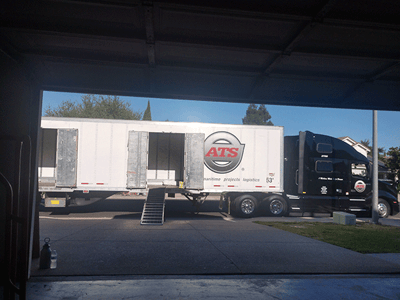Whether or not you, as a shipper, move goods that have changing demand depending on the season, you are affected by those that do. Before getting into the why, let’s define seasonality and talk through a few common examples.
In pretty basic terms, seasonality in shipping essentially means certain products have certain peak seasons depending on the time of year. While many products are impacted by freight seasons, there are a few key areas that are consistent year in and year out:
- Produce/harvest season: Produce season hits between April and September in the South and harvest season peaks in the Midwest at the end of quarter 3, into early quarter 4. These seasons not only impact enclosed van freight to transport the harvested produce, but open deck flatbed freight too because of the increased need to ship the necessary equipment for harvesting.

- Construction season: While much of the southern United States can do construction work year-round, freight is mostly impacted in March or April, depending on weather, when work can begin in the northern parts of the country. Most of the impact within the construction industry is felt with open deck freight because it’s the most suitable to move raw building materials and construction equipment.

- Furniture/household goods season: Most families wait to move until the school year is over, which means there’s a limited window over the summer months to get to their new homes. Household goods shipping mostly impacts enclosed van freight.
- Christmas trees/consumer goods: You can expect these areas to peak at the end of the calendar year like clockwork. While open deck trailers and refrigerated trailers can be used to transport Christmas trees, enclosed dry van trailers are the most in-demand for trees and consumer goods, drastically limiting enclosed van trailers.
- General weather conditions: Unless you’re from the northern part of the U.S. (like we are), you probably aren’t a fan of coming here in the winter months. Heck, sometimes we aren’t fans of being here in the winter either! The same can be said for North America’s truck drivers. Many prefer to stay south in the winter months, which limits capacity — and increases rates — in the north. After all, would you want to secure a load in weather that makes you feel like Jack Nicholson’s character at the end of the Shining?

How Does Seasonality Impact Me?
Whether or not you ship products in the markets listed above, you are certainly impacted. That’s because load volumes skyrocket in the areas with the increased seasonal demand, which leads to inflated freight rates and limits capacity where you are, depending on the season and industry you serve. That being said, the impact on you could be good or bad, depending on your needs.

For example, let’s say you’re a shipper in the Pacific Northwest. During Christmas tree season, you’ll be contending with all of your usual shipping competitors, plus those who are shipping trees. That will almost certainly lead to increased cost for your outgoing freight.
However, you may catch a break with incoming freight. That’s because truck drivers want to be there for the increased outgoing rates — and a low rate coming in is better than no rate for them.
Whether or not you’re in the area impacted by the season, you’ll still feel the ripple effects because trucks will be flocking to the areas where the demand — and, therefore, the increased rates — is.
While each industry’s impact is slightly different, the overall impact on your will very much be the same.
How to Overcome Freight Seasonality Challenges
While there’s not much you can do about the seasonality demand, there are things you can do to get more cost control.
The first, and generally most straightforward, way to overcome the impacts of freight seasonality is planning ahead. Like the examples listed above, most markets’ peak seasons — global pandemic aside — come at the same time every year.
If you prepare ahead of time — and communicate those plans with your shipping partner — you can hopefully solidify rates ahead of time. Lack of planning could lead to costs that go way beyond your planned shipping budget, eating into your margins. For example, finding a truck for same-day shipping out of a produce market during peak produce season is quite difficult, although possible, so you’ll pay a premium for it.
Another option that could come in handy if you’re a shipper who moves freight multiple times a day is creating a contract with your shipping partner. That’s a great way to get more consistent rates throughout the year, no matter what peak seasons you deal with.
In the case of a contract, there are usually times where you’ll pay more than necessary as a shipper and times where you’ll pay lower than the going rate. By the end of the contract, it usually benefits both parties. Learn more about contract versus spot rates — and determine what’s best for you.
Finally, if you don’t already have a great, trusting relationship with your transportation partner, it might be worth finding one you can trust. After all, if you have a quality shipping partner, they’ll probably help you with both of the solutions above before they become a problem for you.
A good partner will call you ahead of time to remind you that you’re in a hot area during the time of the year that’s approaching and come up with a plan to help you compete. That way, they know what to expect and you’ll get peace of mind knowing your freight is covered.




